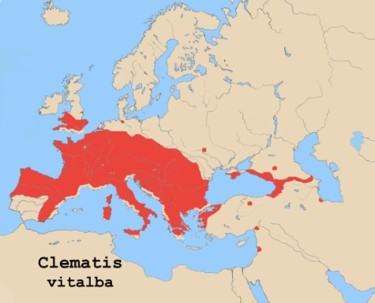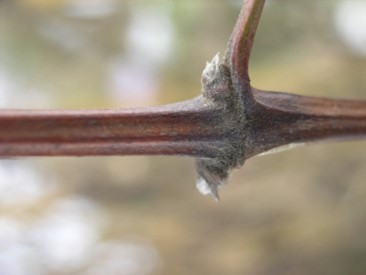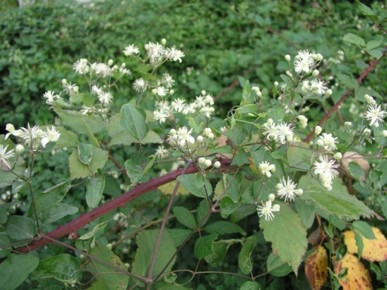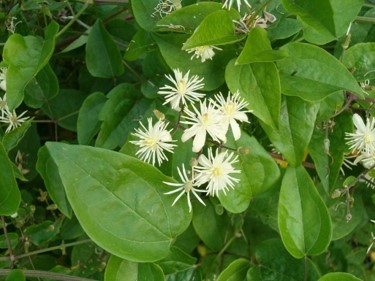Clematis vitalba (also known as old man’s beard and traveller’s joy) is a shrub of the Ranunculaceae family.

Scientific classification:
| Kingdom: | Plantae |
| Clade: | Angiosperms |
| Clade: | Eudicots |
| Order: | Ranunculales |
| Family: | Ranunculaceae |
| Genus: | Clematis |
| Species: | C. vitalba |
Description:
It is a spinach whose stem is four-edged, longitudinally abraded, with a diameter of up to 10 cm, later it is wooden, 12 meters long.
The bark is gray, peeled in thin strips, the trunk is diameter up to about 6 cm.
The root system is shallow, though well developed. The blooms are light brown to yellowish brown, on the sunny strata of violet-reddish, mostly naked.
Puppies are egg-shaped to spherical, light brown, fairy hairy.
The leaves are opposite, complex, indistinctly oddly broken, consisting of 5-7 cardiac or oval, irregularly ribbed leaves of 3-10 cm in length that are on the stems, whole or coarse toothed edge, sometimes carved, naked, autumn become dark red before they fall off . Vitice are created on the stems of individual leaves, with which they are grafted for other plants and substrates.
The flowers are gypsy, regular, about 2 cm in diameter, complex in broom flavors, have a pleasant, poorly noticeable fragrance, they are worn by long stems that occur in the leaves of the leaves. They are made of four whitish, narrow bars, many of them are pigs, pale yellow, shorter than the lapes, 1-2 mm long. The beans have more, the pancreas are free of each other. Blooms from June to August when they visit bees collected by nectar and white pollen in the morning.
The fruits are single-sided, reddish-brown nuts of flat and jagged shape, up to 4 mm long, with about 2-3 cm long, white, thick hairy outgrowths. They are from August to October.

Habitat:
It is widespread in Central, Southern and Eastern Europe, in Western Asia, North Africa. We find it self-licking that often swallows other plants in deciduous forests, in shrubs and scrubs, near rivers, streams and canals, up to 1400 m above sea level. Suits her dry, lime soil rich in nutrients. Reproduces seeds and vegetative cuttings in the late summer.

Etymology:
The Latin name of the genus Clematis derives from the Greek word of the clay (branch, vitica). The name of the vitalba type is white. In foreign languages, the titles include old man’s beard, traveler’s joy, Gewöhnliche Waldrebe (German), c lématite vigne-blanche, clématite des haies (fr.), Clematide (tal.), Clemátide ( sp . ), cipó do reino, vid branka (port.), plain shroud (slo.).
Usage:
Eat very young shoots , they eat like asparagus, and before consumption, they must be baked. It should be noted that the leaf contains a toxic substance protoanemone that can cause blisters and severe healing wounds on the skin. It was once used as a medicine for various diseases, but it was often the cause of poisoning and was therefore discarded as a medicine.
In the past, the stems were used for knitting hives and they used it for a long time in beekeeping as the main hive of bees.

